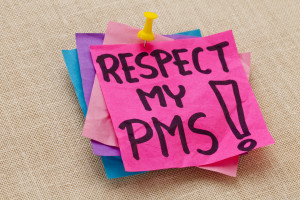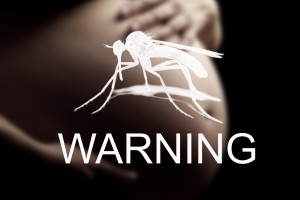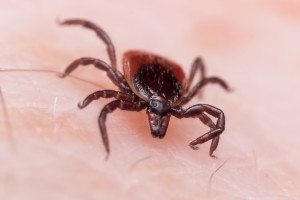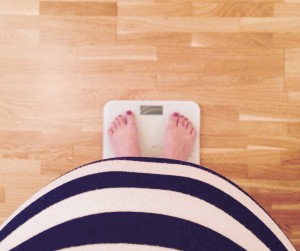Hashimito’s disease is the type of condition that can slowly sneak up on you without warning. It poses serious risks for women, as its signs and symptoms may not initially be felt, seen, or sensed. Improve your knowledge and awareness of this dangerous, and often undetected disease, so you can give yourself the best opportunity to avoid a delayed diagnosis.
What is Hashimoto’s Disease?
Hashimoto’s disease, also known as chronic lymphocytic thyroiditis, primarily impacts middle-aged women. It is an autoimmune disorder in which your immune system creates antibodies that attack your thyroid gland—the small gland at the base of your neck. Your thyroid gland is an essential element of your endocrine system, as it produces hormones that coordinate many of your bodily functions. Hashimoto’s diseases typically cases inflammation of the thyroid, which can lead to complications of hypothyroidism (an underactive thyroid gland).
Causes and Risk Factors of Hashimoto’s Disease
The causes of this autoimmune disease are not known. Some scientists believe Hashimoto’s disease may be caused by a virus or bacterium, while others believe it may stem from a genetic flaw. Factors that may impact your risk of Hashimoto’s disease include: gender, age, and heredity. More specifically, women are more likely to be diagnosed with Hashimoto’s disease, and while the disease can impact men and women of any age, it is most likely to impact middle age adults.
If members of your family have been diagnosed with a thyroid or autoimmune disease in the past, you also may be at a greater risk of Hashimoto’s disease. Other factors that may increase your risk include having been diagnosed with another auto immune disease, such as lupus, or rheumatoid arthritis, or having been exposed to excessive amounts of environmental radiation.
Signs and Symptoms
Hashimoto’s disease typically progresses slowly over many years, causing chronic thyroid damage. Many of the symptoms of Hashimoto’s disease go undetected, and typically mirror those of hypothyroidism. Talk to your doctor if you experience any of the following common symptoms:
- A swelling at the front of your throat (known as “goiter”)
- Fatigue
- Depression
- Memory lapses
- Muscle aches and stiffness
- Joint pain
- Increased sensitivity to cold temperatures
- Constipation
- Dry, pale skin
- Brittle nails
- A puffy face
- Hair loss
- A swollen tongue
- Unexplained weight gain
Treatment Options
If you’re diagnosed with Hashimoto’s disease, your doctor may recommend treatment with synthetic hormones. Daily hormone replacement therapy may help if you are experiencing thyroid hormone deficiency. Use of daily synthetic hormones may be lifelong, though your doctor will likely regularly check your levels of thyroid-stimulating hormone (TSH) to monitor the proper dosage.
Talk to Your Doctor
If you have questions or concerns about Hashimoto’s disease, or believe you may be experiencing hypothyroidism, talk to your doctor. He/she can help you better understand your risk factors, or provide a diagnosis.
More
 As a new mom, you’re worried about every little aspect of your new little one’s development. Is he sleeping enough? Is he warm enough? Is he eating enough? If you’re breastfeeding, the question of how much breast milk your baby needs can feel difficult to manage. If most of your baby’s feedings are at the breast, it can feel impossible to track how much he’s really eating. To help you demystify the most common breast milk consumption questions, we’ve outlined guidelines and tips to help you ensure your baby is getting just the right amount of breast milk each and every day.
As a new mom, you’re worried about every little aspect of your new little one’s development. Is he sleeping enough? Is he warm enough? Is he eating enough? If you’re breastfeeding, the question of how much breast milk your baby needs can feel difficult to manage. If most of your baby’s feedings are at the breast, it can feel impossible to track how much he’s really eating. To help you demystify the most common breast milk consumption questions, we’ve outlined guidelines and tips to help you ensure your baby is getting just the right amount of breast milk each and every day.
How Much Breast Milk Does an Infant Need?
Between months one and six, an average-sized breast-feeding baby will consume about three ounces of breast milk. This many seem like a small quantity, but keep in mind that your baby should be eating every few hours.
How Frequently Should You Breastfeed?
Your baby will likely be hungry every hour and a half to every three hours. Never go more than four hours in between feedings, even overnight. To track your feedings, count the length of time between when your baby begins to nurse, to when the next session starts again, rather than starting to count time when one session ends.
Infants should be breastfed eight to 12 times per day during month one. During month two and beyond, your infant should nurse seven to nine times per day. Talk to your OBGYN about your baby’s unique needs. He/she will be able to help you further refine your breastfeeding schedule.
How Frequently Should I Alternate Breasts?
It’s important to alternate breasts during feeding sessions to ensure your milk supply is maintained in both breasts. Try to give your baby the same amount of milk from each breast during each feeding session. The amount of time a baby needs to spend with each breast will vary from case to case. As a best practice, try to switch breasts when you feel your baby is about half way through a feeding session, and alternate which breast you offer first at the start of each session.
What are the Signs my Baby Wants to Nurse?
When your baby is hungry, he will let you know. Crying is not the only sign of hunger. In fact, it’s a late sign, and you’ll be better off feeding your baby before he becomes hungry and fussy. Signs that your baby is ready to nurse include:
- Sticking out his tongue
- Opening his mouth
- Moving his head from side to side
- Nuzzling against the breast
- Making a suckling expression with his mouth
- Placing his fists to his mouth
What are the Signs my Baby is Full?
You’ll know your baby has comfortably had enough breast milk when his sucking becomes slow, or he simply turns away from the breast.
How Long Should Each Breast Feeding Session Last?
Every mom-baby pair is unique, so talk to your OBGYN or baby’s pediatrician if you have questions or concerns regarding the average length of a breastfeeding session. Such factors that may impact the time it takes your infant to breast feed may include your milk supply, your let-down reflex (which causes milk to flow from the nipple), and if your milk typically flows quickly or more slowly. In general, babies become more efficient eaters as they get older, so your breastfeeding sessions should begin to go faster as your baby ages.
Talk to Your OBGYN and Your Baby’s Pediatrician
For any questions that you may have about breastfeeding your infant, whether it’s at day one, or 101, talk to your doctor. He/she will help you ensure your baby remains healthy, happy, and comfortably full.
More
Western New York may be known for its epic winter storms, but the summer heat can be just as dangerous. As we reach the peak of hot summer months, it’s important to understand the dangers of such heat-related conditions as sun poisoning, sunstroke, and dehydration. Learn the risks associated with these conditions, and how you can protect yourself and your family while enjoying the final days of summer.
The Threat of Heat-Related Illnesses
Heat-related illnesses pose a threat to adults, seniors, and children any time you’re exposed to abnormal or prolonged amounts of heat and humidity without adequate fluid intake or relief. If not properly treated, heat-related illnesses can cause serious health complications, and in the most devastating cases, even death.
Dehydration
Dehydration can occur when your body doesn’t have enough water. Without proper hydration, your body can not properly function. On hot summer days, you lose more water than usual from sweating, especially if active. If the fluids you lose are not properly replaced by drinking fluids and eating foods that contain water, you place yourself at risk of dehydration.
Symptoms of mild dehydration include thirst, dry mouth, only urinating a small amount, urine that is a dark yellow color, headache, and muscle cramps. Symptoms of more severe dehydration may include no urination at all, very dry skin, dizziness, rapid heartbeat, rapid breathing, fatigue, and fainting.
If you believe you may have mild to moderate dehydration, stop any activity and rest. If you’re outside, seek shade or a cool, air conditioned area. Remove excess layers of clothes, prop up your feet, and drink a rehydration drink such as water, juice, or a sports drink to replace fluids. Prevent dehydration before symptoms occur by drinking plenty of water before, during, and after any activity or long-term heat and sun exposure.
Sun Poisoning
Sun poisoning is an extreme case of sunburn. Symptoms initially appear the same as a sunburn, but can escalate quickly to include swelling, large blisters, headache, fever, dizziness, nausea, dehydration, and fainting. Individuals with pale skin, especially redheads, are particularly susceptible to sun poisoning in summer months. To avoid sun poisoning, wear protective clothing. Apply and reapply an SPF of at least 15 or 30 throughout the day, seek shade, and avoid being exposed to the sun during the hottest parts of the day.
If you believe you may have a serious case of sun poisoning, seek medical attention promptly. If you feel your symptoms are less severe, you can consider taking ibuprofen to ease the pain, applying cold compresses made of equal parts milk and water to damaged areas, and most importantly, hydrating.
Sun Stroke
Also often referred to as heat stroke, this heat-related condition is the most severe heat-related illness. When your body’s heat-regulating system is overwhelmed by excessive heat, it poses a life-threatening emergency. Immediate medical care should be obtained. Symptoms of sun stroke include warm and dry skin, a high fever (typically over 104 degrees), rapid heart rate, loss of appetite, nausea, vomiting, and headache.
If you believe you may be experiencing sun stroke, call for emergency medical care. If you cannot call for assistance promptly, move to a cool place to rest. Remove excess clothing, drench your skin with cool water, and fan your skin. If you have ice available, place ice bags in your armpit and groin areas. Also, be sure to drink cool fluids.
To avoid sun stroke, stay protected from the sun, wear sunscreen, a hat, and sunglasses, and seek shade when outdoors. Dress in lightweight, light colored, loose-fitting clothing. While being active outdoors, take frequent breaks, hydrate frequently, and cool skin with cold water.
Stay Safe
While we all want to maximize our enjoyment of warm summer days, it’s important to not spend too much time outside in the sun and heat, especially if you’re being active. Make sure to stay hydrated, avoid being outside during peak sun and heat hours, wear appropriate clothing, sunscreen, sunglasses, and a hat, and seek shade whenever possible. By following these tips, you can enjoy summer days, without the risk of illness. If you have any questions or concerns about heat-related illnesses, and your risks, talk to your doctor.
More
That Time of the Month Doesn’t Have to Be Horrible
 It comes on every month like clockwork. The moodiness, the bloating, the cramps. It’s a miserable cycle that can disrupt work, your family life, and even your personal relationships. Premenstrual Syndrome (PMS), or the combination of symptoms that some women suffer about one week before their period, doesn’t have to disrupt your life. Today, our doctors are offering tips and advice for easing the symptoms of PMS, and reclaiming your life.
It comes on every month like clockwork. The moodiness, the bloating, the cramps. It’s a miserable cycle that can disrupt work, your family life, and even your personal relationships. Premenstrual Syndrome (PMS), or the combination of symptoms that some women suffer about one week before their period, doesn’t have to disrupt your life. Today, our doctors are offering tips and advice for easing the symptoms of PMS, and reclaiming your life.
What Causes PMS?
Changes in hormones associated with the menstrual cycle are the underlying cause of PMS symptoms.
Signs and Symptoms of PMS
Symptoms vary widely on a per woman basis, but may include: acne, tender breasts, fatigue, difficulty sleeping, upset stomach, bloating, headache, backache, food cravings, muscle or joint pain, mood swings, anxiety, or depression. What follows are a variety of options for easing these disruptive symptoms. If you have any questions about the techniques best for you, talk to your OBGYN.
Improve Your Diet
You should aim to eat well-balanced meals every day, but it’s even more important during the days preceding your period. Reduce the amount of carbs you eat (regardless of what you’re craving), and increase your protein, fruits, vegetables, and whole grains. Also, reduce your consumption of processed foods and sugar. In addition, salt can cause bloating, caffeine can increase anxiety, and alcohol may exacerbate feelings of depression. A healthy diet will help stabilize insulin levels to minimize hormonal shifts. Remember to also eat regular meals and snacks to reduce severe spikes in blood sugar levels.
Get Enough Sleep
Being overtired certainly won’t help your PMS symptoms. Make sure to get 7 to 9 hours of sleep per night. Lack of sleep could exacerbate your moodiness, or cause you to make poor diet decisions.
Exercise
Regular cardio will increase the endorphins that naturally tend to drop in the second half of your menstrual cycle, leading to mood swings and depression. Exercise also boosts your lymph system’s cleaning actions, ridding your body of toxins and excess hormones. It also increases your metabolic rate, which burns fat for energy, and helps establish a healthier hormonal balance.
Herbal Remedies
Herbal remedies are available that can help to regulate shifting hormones and minimize mood swings and cramps. Herbal options may include black cohosh, chasteberry, evening primrose oil, ginger, raspberry leaf, dandelion, or natural progesterone creams.
Take a Multivitamin
For some women, a multivitamin can help to restore balance to the body, especially when taken in conjunction with a healthy diet. An ideal multivitamin will include omega-3s, vitamins B, E and D, calcium, and magnesium.
Take NSAIDs for Pain
If back, muscle, and joint pen, or breast tenderness are severe, talk to your doctor about taking a nonsteroidal anti-inflammatory plain reliever (NSAID), such as ibuprofen or naproxen. Over-the-counter PMS medications such as Midol and Pamprin may be effective as well.
Consider Birth Control
If you’re not already utilizing an oral contraceptive, talk to your OBGYN about the benefits of taking a low-dose birth control pill to help regulate hormones and ease PMS symptoms.
Minimize Stress
This may seem like the hardest bit of advice; after all, how can one truly minimize the stress of work, family, social obligations, and community service? Still, making a conscious effort to reduce spikes of stress hormones can improve how you feel during those difficult days before your period arrives. Try deep breathing exercises, yoga, massage, meditation, and any other soothing activity that can help to re-center your body, mind, and soul.
Talk to Your OB-Gyn
That time of the month doesn’t have to be painful. Some women can experience severe PMS symptoms, but you don’t have to suffer in silence. Make an appointment to discuss your PMS with your OB-Gyn. He or she can suggest the best course of action to help you feel better.
Looking for a new Ob-Gyn? We are currently accepting new patients at all of our WNY locations. Call for an appointment today. We look forward to meeting you!
More
 Summer is the perfect time of year for all our favorite warm-weather activities; from drinking cool glasses of sweet lemonade, to swinging in hammocks under the shade, to getting out and being active. What better way to enjoy a low-impact summer-time activity that requires a minimal investment in equipment and supplies, than by bike riding. Summertime bike riding is the perfect way to enjoy warm summer days and get fit. Don’t take this easy-breezy activity for granted, though. Bike riding is not without its safety hazards. Before you pedal the pavement, read our summer bike safety tips (and yes, that includes wearing a helmet!).
Summer is the perfect time of year for all our favorite warm-weather activities; from drinking cool glasses of sweet lemonade, to swinging in hammocks under the shade, to getting out and being active. What better way to enjoy a low-impact summer-time activity that requires a minimal investment in equipment and supplies, than by bike riding. Summertime bike riding is the perfect way to enjoy warm summer days and get fit. Don’t take this easy-breezy activity for granted, though. Bike riding is not without its safety hazards. Before you pedal the pavement, read our summer bike safety tips (and yes, that includes wearing a helmet!).
- Protect Your Head. Even though the law only requires children under the age of 14 to wear safety certified bicycle helmets in New York, adults should wear them too. According to data provided by the U.S. Department of Transportation, each year approximately two percent of motor vehicle crash deaths are bicyclists, and in a majority of bicyclist deaths, the most serious injuries are to the head. In addition, helmet use has been estimated to reduce the odds of head injury by 50 percent, and the odds of head, face, or neck injury by 33 percent.
- Be Alert. Whether you’re biking on a busy road with two-way traffic, or on a quiet neighborhood side street, always be alert for pedestrians, other bikers, pets, vehicles, and unexpected road hazards. Learn to always scan ahead, center, left, and right. Resist the temptation to look down at the ground. Keep your head up to scan the upcoming area for obstacles or hazards.
- Be Seen. Especially if you’ll be biking on main roads, utilize proper and expected hand signals:
- Right Turn: Extend your right arm out straight with all fingers extended or use your index finger to point right.
- Left Turn: Extend your left or right arm sideways and bend your arm at a 90-degree angle at the elbow, hand pointing down, and the palm of your hand facing backwards.
- Also, make sure your bike is equipped with a horn, and a reflector and light for evening travel.
- Travel Safely in Pairs and Groups. Biking can be a great group activity, but make sure to do it safely. Whenever biking with another person, or with a group, ride in a single file line with enough space between bikers that if one has to stop abruptly, you won’t be at risk of a collision.
- Ride on the Right Side of the Road. Unlike pedestrians, bikers are required by law to ride with traffic. Not against it. Bike on the right side of the road. Failure to follow traffic rules could result in a law enforcement ticket.
- Have Fun. Getting out and being active is one of the best ways to maximize the summer sun before we all have to trade in our lemonade and sandals for pumpkin spice lattes and fur-lined boots. Enjoy what’s left of the summer by biking your way to fitness. Just remember to put your safety first in every situation.
More
 There may be less buzz about the Zika virus this summer, but that doesn’t mean that women — especially pregnant women — don’t still need to be extremely cautious and aware of the risks when traveling and spending time outside. Zika, the virus transmitted by mosquitos, sex, and blood transfusions, and which may cause birth defects when passed from mother to fetus, is still a threat to travelers of South and Central America, and in some southern American states.
There may be less buzz about the Zika virus this summer, but that doesn’t mean that women — especially pregnant women — don’t still need to be extremely cautious and aware of the risks when traveling and spending time outside. Zika, the virus transmitted by mosquitos, sex, and blood transfusions, and which may cause birth defects when passed from mother to fetus, is still a threat to travelers of South and Central America, and in some southern American states.
In addition, there is still no vaccine or medicine to treat Zika, which means the best way to stay safe from the virus is through prevention. All women, but especially those who are pregnant or thinking of becoming pregnant, should understand the latest threats, travel safety recommendations, and most importantly, how to stay safe and protected from the threat of contagion this summer.
What We Know About Zika
The type of mosquito that can spread the Zika virus — The Aedes species of mosquito — naturally occurs in many areas across the United States, as well as in Central and South America and other warm climates across the globe. As of May 2017, the Centers for Disease Control and Prevention (CDC) estimate that there were at least 50 countries and territories with active Zika virus transmissions.
While it’s been known that Zika can cause the birth defect microcephaly when transmitted from a mother to her fetus, doctors have also found a link between Zika and other types of birth defects. We also now know that Zika does not only put fetuses at risk. The CDC is researching the link between Zika and Guillain-Barré Syndrome, a rare autoimmune disorder that may lead to life-threatening paralysis.
Summer Travel Plans? Stay Protected from Zika
If you plan to travel this summer, be aware of both the national and international areas where Zika poses the highest risk. According to the CDC, in the United States, the areas at the highest risk of Zika include Brownsville, Texas, and Miami-Dade County, Florida. In addition, pregnant women should not travel to any countries or areas that have received a Zika-related travel warning.
This map from the CDC summarizes the countries and territories that pose the highest risk. Currently, the CDC has issued Zika-related travel notices for Mexico, the Maldives, parts of the Caribbean, Central and South America, and several of the Pacific Islands.
The Latest CDC Tips for Zika Prevention
As long as the threat of Zika remains high, continue to follow the latest prevention tips and best practices from the CDC:
- Protect yourself from exposure to mosquito bites by wearing insect repellent during the day and night, wearing long-sleeved shirts, and eliminating any standing water from your property.
- Especially if pregnant or planning to become pregnant, do not travel to areas with high risks of Zika.
- Most adults who contract Zika won’t demonstrate symptoms, which is why pregnant women whose partners have traveled to an area with an elevated Zika risk should follow safe sex practices.
For more on the latest from the CDC regarding Zika, click here. If you are pregnant or planning to become pregnant, and have questions or concerns about the risk of Zika in your area, talk to your OBGYN.
More
 If you have a pet, you’re likely already aware of the threat of ticks, however ticks and the diseases they carry can be just as dangerous to adults and children. As we reach the peak of hot summer days this month, make sure you are familiar with the health risks associated with these tiny insects, how to avoid exposure to bites, and what to do if you find a tick on your skin or believe you’ve already been bitten.
If you have a pet, you’re likely already aware of the threat of ticks, however ticks and the diseases they carry can be just as dangerous to adults and children. As we reach the peak of hot summer days this month, make sure you are familiar with the health risks associated with these tiny insects, how to avoid exposure to bites, and what to do if you find a tick on your skin or believe you’ve already been bitten.
Ticks as Carriers of Disease
Across the United States, Western New York is among the areas most heavily populated by ticks. These small insects have been known to carry several potentially deadly diseases, including:
Lyme disease – A bacterial infection that can affect any organ of the body, including the brain, nervous system, muscles, joints, and the heart. Women infected with Lyme disease from a tick bite may pass the disease to their fetus, in rare cases, resulting in stillbirth.
Tularemia – A bacterial disease whose symptoms can range from mild to severe. Typically accompanied by a high fever, Tularemia may also cause a skin ulcer at the infection site, and swelling of regional lymph glands.
Ehrlichiosis – A bacterial infection that can cause flu-like symptoms that typically appear a week or two after a tick bite.
Babesiosis – A rare, severe, and sometimes fatal tick-borne disease caused by a microscopic parasite that infects red blood cells. Babesiosis may be transmitted from a pregnant woman to her fetus. Symptoms are not always prevalent, but may include fever, fatigue, and hemolytic anemia that lasts from days to months.
Anaplasmosis – A bacterial disease whose symptoms typically appear within one to two weeks after being bitten by an infected tick. Symptoms may include fever, headache, muscle pain, fatigue, chills, nausea/abdominal pain, cough, confusion, and rash.
Other diseases carried by ticks, not commonly found in Western New York, include:
- Rocky Mountain Spotted Fever
- Relapsing Fever
- Colorado Tick Fever
Tick Bite Signs and Symptoms
In many cases, if identification of a tick-transmitted disease is identified and treated quickly, the condition can be managed without life-threatening consequences. However, too often individuals never know that they were bitten by a tick until they experience the symptoms of one of the conditions listed above, which may not appear for a few days, or up to several weeks from the time of the bite.
Signs of a potential tick-borne illness may include:
- A red spot or rash near the location of the bite
- A full body rash
- A stiff neck
- A headache
- Muscle or joint pain
- Nausea
- Fatigue
- A fever
- Chills
- Swollen lymph nodes
What to Do if You Spot a Tick
If you find a tick on your body, it’s important to remove it quickly, but carefully. Follow these tips below for safe tick removal:
- Using pointed tweezers, grip the tick as close to the surface of the skin as possible.
- Firmly pull the tick straight upward with even pressure. Do not twist or pull too quickly, as you risk detaching the mouth parts of the tick and leaving it embedded in the skin. If this occurs, pull the mouth parts out with tweezers. If not possible, leave them to heal on their own.
- Once the tick has been removed, clean your hands and the bite area thoroughly with rubbing alcohol or soap and water.
- If the removed tick is still alive, do not squeeze it between your fingers. Dispose of it by submerging it in alcohol, or flushing it down the toilet.
Tick Bite and Infection Prevention
It typically takes over 24 hours of feeding for a tick infection to be transmitted. The sooner a tick can be safely removed, the less risk you’ll face for infection. The best way to protect yourself from a tick-transmitted illness, is to protect yourself from tick bites. Follow these tips to minimize your chances of a tick bite:
- Wear long sleeves and long pants when walking in wooded or grassy areas.
- When walking in wooded areas, stay in the center of trails and away from brush.
- Use a tick repellent that’s at least 20 percent DEET.
- After being outdoors in a tick-prone area, check your body for ticks, especially under arms, between legs, and in hair.
- Take a shower within 2 hours of being outdoors.
This summer, don’t resign yourself to staying inside and missing out on the best of the season. Enjoy the outdoors, but follow tick safety best practices and stay vigilant so that if you do identify a tick, it can be safely removed before contagion occurs. If you have any questions regarding ticks or the threats they pose, talk to your doctor.
More
 It’s easy to remember that smoking can put you at risk for cancer, but it can be easy to forget that the summer sun we love so much can be just as dangerous. According to the Skin Cancer Foundation, each year in the United States over 5.4 million cases of non-melanoma skin cancer are treated in more than 3.3 million people. Every year, there are more new cases of skin cancer than the combined incidences of breast, prostate, lung, and colon cancer, and over the past 30 years, more people have had skin cancer than all other cancers combined.
It’s easy to remember that smoking can put you at risk for cancer, but it can be easy to forget that the summer sun we love so much can be just as dangerous. According to the Skin Cancer Foundation, each year in the United States over 5.4 million cases of non-melanoma skin cancer are treated in more than 3.3 million people. Every year, there are more new cases of skin cancer than the combined incidences of breast, prostate, lung, and colon cancer, and over the past 30 years, more people have had skin cancer than all other cancers combined.
You don’t have to stay indoors all summer long to protect yourself from skin cancer, but you do need to understand the risks and make choices that will limit your direct sun exposure. Read on for our summer sun safety best practices, and tips for choosing the SPF that’s right for you.
Tips to Limit Your Sun Exposure
- Stay in the shade, especially between 10 a.m. and 4 p.m., and during late spring and early summer when UV rays are the strongest.
- Do not intentionally tan.
- Avoid sunburns. Getting sunburned just once every two years can triple your risk of developing melanoma skin cancer.
- Wear a broad-brimmed hat and sunglasses with UV-coating to protect your face and eyes.
- Wear long sleeves and pants of breathable fabric while out in the sun.
- Use extra caution around water, snow, and sand, as such surfaces reflect damaging rays, which can increase your chance of a sunburn.
- Protect yourself, even on cloudy or hazy days, as 80% of damaging UV rays can still reach you through the clouds.
- Wear sleeves or sunscreen even when driving. Harmful UVA rays can still reach you through window glass.
Sunscreen and SPF Facts
- Sunscreens are regulated as over-the-counter drugs by the U.S. Food and Drug Administration.
- SPF stands for sun protection factor. Sunscreens with a higher SPF generally offer more protection from the sun’s UV radiation.
- The SPF rating on a sunscreen product refers mainly to the level of UVB protection it offers. For example, SPF 15 blocks 93% of UVB radiation, while SPF 30 blocks nearly 97%. Higher sunscreens block slightly more UV rays, but no sunscreen can offer 100% protection.
- SPF clothing is 100% effective at blocking UV rays, making it more effective than regular cotton materials.
- The FDA has banned sunscreens from claiming to be waterproof or sweat proof, however there are products available that offer protection if you plan to be in the water. Water resistant products are generally effective for up to 40 minutes in water, while very water resistant products are generally effective for up to 80 minutes in the water.
SPF Recommendations
- When outdoors, always apply a broad spectrum (UVA/UVB) sunscreen of SPF 30 or higher. Such sunscreens protect you from both types of damaging UV rays.
- When choosing sunscreens, read the label. If a product has a skin cancer/skin aging alert in the Drug Facts section, it means it will only prevent sunburn and will NOT reduce the risk of skin cancer.
- Always choose a sunscreen that is water resistant, but especially if you anticipate extended outdoor activity.
- Apply one ounce of sunscreen (enough to fill a shot glass) to your entire body, and to dry skin, 15 to 30 minutes before going outside.
- Reapply sunscreen every two hours or immediately after swimming or excessive sweating.
- Don’t forget to protect your lips. Choose a lip balm that contains at least SPF 30.
- Rather than using a product that claims to offer SPF and insect repellent, use these products separately for best results.
- Check the date of your sunscreen. The FDA requires that sunscreens retain their strength for at least three years. If you have an old bottle at home, or one that has passed its expiration date, replace it.
- Sunscreens come in a variety of forms. Choose the one that best fits your needs:
- Creams – Best for the face and dry skin.
- Sprays – Often chosen by parents for their convenient application, just be sure to apply the proper amount.
- Gels – Best for hairy areas.
- Sticks – Best for application around the eyes.
If you have any questions or concerns regarding summer sun exposure, or your personal risk factors for skin cancer, talk to your doctor. Chouchani, Sayegh and Robinson MD are currently accepting new patients. Call for an appointment today.
More
 “Well, I’m eating for two now, so I should really have just one more serving…” When you’re pregnant, the temptation to splurge on extra servings, or give-in to unusual cravings as your belly expands, can be easy. You’re gaining weight anyway. Who’s to say any one pound should be attributed to your meals and not to baby’s growing size?
“Well, I’m eating for two now, so I should really have just one more serving…” When you’re pregnant, the temptation to splurge on extra servings, or give-in to unusual cravings as your belly expands, can be easy. You’re gaining weight anyway. Who’s to say any one pound should be attributed to your meals and not to baby’s growing size?
The truth, however, is that regulated weight gain from high quality foods and a defined nutrition plan is critical to a healthy pregnancy, and a healthy newborn. Weight gained from sugary, fried, or processed foods, on the other hand, is not, regardless of how comforting they taste, or how easy it is to justify with the phrase, “But I’m eating for two.” Read on to learn how much weight you should gain during your pregnancy, and why it’s important to maintain a healthy weight strategy.
Healthy Weight, Healthy Baby, Healthy Mommy.
According to the Centers for Disease Control and Prevention (CDC), studies show that only 32 percent of women gain their recommended amount of weight during their pregnancy. Nearly half (48 percent) gain too much, and 21 percent don’t gain enough.
Women who do not gain enough weight during pregnancy are at risk of giving birth to an undersized infant. Babies born too small may experience such health complications as difficulty breastfeeding, developmental delays, or they may be at an increased risk of illness. Babies born to underweight women may even be born premature, which can lead to additional health complications. For moms, women who do not gain enough weight during pregnancy are at risk of anemia, or developing osteoporosis later in life.
Women who gain too much weight, also put both themselves and their babies at risk of health complications. Women who gain too much weight are at risk of delivering over-sized babies which may require a cesarean section, or escalate over time into childhood obesity. Babies born of overweight women are also at risk of being born premature.
Women who gain too much weight during pregnancy may face such health complications as gestational diabetes, or preeclampsia. They often also experience difficulty losing the extra weight. As a result, after baby is born they may experience their own health complications related to obesity, such as diabetes or high blood pressure.
How Much Weight Should You Gain During Your Pregnancy?
There is no fixed amount of weight that each woman should gain during her pregnancy. Rather, the amount is assessed based on your pre-pregnancy body mass index (BMI). Typically, women with an underweight BMI should gain 28 to 40 pounds during pregnancy. Women with a normal BMI should gain 25 – 35 pounds during pregnancy, women with an overweight BMI should gain 15 -25 pounds, and women whose BMI indicates they are obese should only gain 11 – 20 pounds.
How Many Extra Calories Do Pregnant Women Need.
The number of extra calories pregnant women need is less than you’d expect. You only need about 300 extra calories per day for the healthy development of your baby—an amount that is likely much less than that extra serving of ice cream, chips, or your other favorite comfort food.
Not only is the number of extra calories you consume important, so is the source of those calories. Your extra calories should come from lean proteins, fibers, grains, and healthy fats, not sugary carbohydrates or trans fats.
How to Develop a Healthy Weight Gain Plan.
Your OBGYN will work with you to put a healthy nutrition plan in place, based on your individual needs and health history. He or she will also weigh you at every visit to help track your progress and make adjustments to your nutrition strategy throughout your pregnancy if more weight needs to be gained or lost.
If you have questions about your weight or the health of your baby at any point throughout your pregnancy talk to your OBGYN. He or she will help you and your baby create and maintain a healthy plan from months one through nine. And if you are newly pregnant and live in the Western New York area, consider Chouchani, Sayegh and Robinson for all of your prenatal care. We are currently accepting new patients.
More
 Exercise is just as important during pregnancy as it is before and after. However, there are certain guidelines you should follow. Read on to learn what exercises are safe throughout your pregnancy, and which forms of activity should be avoided, for your health and for baby’s safety.
Exercise is just as important during pregnancy as it is before and after. However, there are certain guidelines you should follow. Read on to learn what exercises are safe throughout your pregnancy, and which forms of activity should be avoided, for your health and for baby’s safety.
Baby-Safe Activities
Generally, the following forms of fitness can safely be maintained during your pregnancy, with your doctor’s consent.
Walking
This exercise is easy, free, and it can be done anywhere. All you need is a comfortable pair of sneakers. Brisk walking while pregnant can help raise your heart rate, without putting too much strain on muscles and joints.
Yoga
Yoga is not only an effective activity for building core strength and firming muscles, it helps soothe stress and ease anxiety. What soon-to-be new mom couldn’t benefit from less stress?
Light Strength Training
Not only does light weight training help you to build muscles before baby arrives, it can be part of a healthy post-baby exercise plan. Plus, you’ll need strong arms and legs for carrying your baby. Just be sure not to use excessive weight, and avoid any exercises where you are lying on your back.
Swimming
Swimming can be a comfortable and effective activity for any stage of your pregnancy. Not only will you feel lighter in the water, it’s gentle on joints and can help relieve swollen ankles.
Stationery Cycling
Stationery bike cycling is a safe way to train leg muscles and achieve 30-minutes of cardio without the need for expensive gear, being exposed to the elements, or the risks of oncoming traffic. It’s also easy on joints, which is ideal during pregnancy.
Low-Impact Aerobics
Search for an aerobics class in your area geared toward pregnant women. You’ll want instruction that helps you tone all your muscles, and boost your cardio, without doing any activities that are too straining, especially later in your pregnancy.
Exercises to Avoid While Pregnant
It can be hard to feel like you have to give up activities that you love while pregnant, however for your safety and the health and well-being of your new addition, your doctor is likely to suggest that you avoid the following activities during your pregnancy, especially in your later trimesters:
- Racket sports, or anything that requires you to quickly pivot, turn, or change directions.
- Contact sports such as hockey, basketball, and soccer.
- Activities that put you at risk of falling, such as rollerblading, outdoor cycling, horseback riding, surfing, or skiing.
How Much Exercise is Enough?
Talk to your OBGYN to devise a fitness plan that is right for you, however most pregnant women will still need about 30 minutes of exercise on most days. If on any one day you feel too fatigued to achieve your 30-minute goal in one session, consider 15 minutes in the morning, and 15 minutes later in the day instead. Also, make sure any cardio activity you are participating in that is raising your heart rate isn’t making it too difficult to breathe. You should be able to comfortably carry on a conversation while you’re working out.
Before you begin any exercise regimen while pregnant, talk to your OBGYN. He or she can help you build an ideal fitness plan based on your current fitness levels, and any possible unique risk factors.
More








